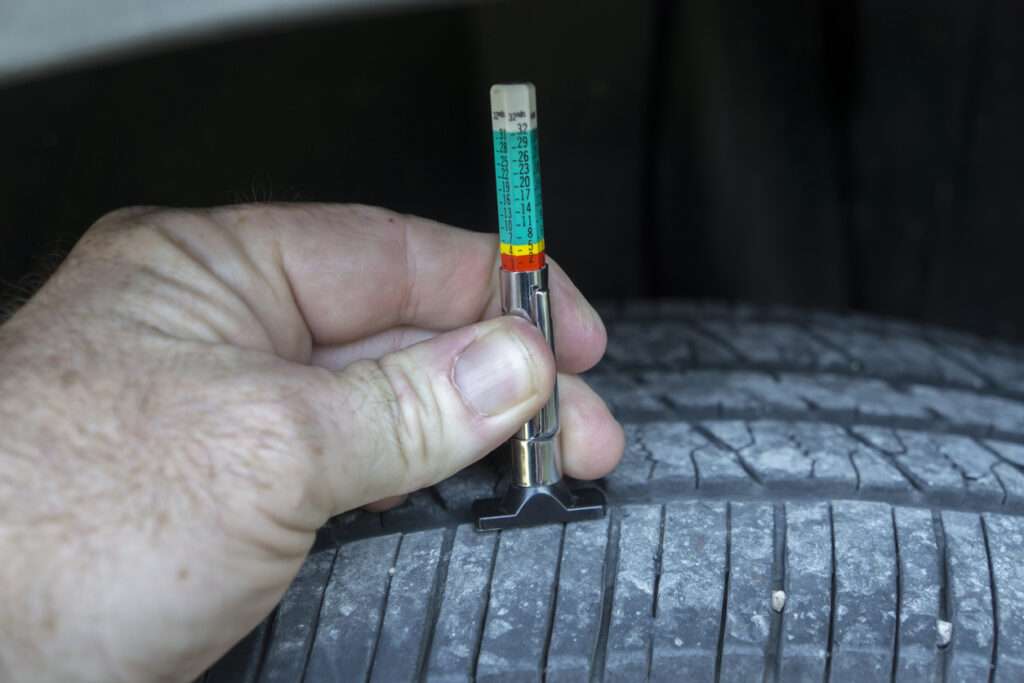Tire life span is a topic that often centers around mileage, overshadowing the many other factors that could influence the longevity of tires. If you’re tired of tire myths, ditch the mileage obsession and discover the hidden factors impacting your tires’ life span.
Kennedy Transmission’s automotive experts are here to shift the focus on what matters, offering helpful tips like learning to read wear indicators and selecting tire types for every road and season. Say goodbye to unexpected flats and hello to confident cruising with informed choices and pro tips.
7 Factors that Affect Tire Life Span
- Driving Style
Harsh driving styles, such as rapid acceleration and hard braking, can stress your tires and cause wear and tear more quickly. Calm, consistent driving can keep your tires from wearing out. By recognizing these driving habits and making a change, you could significantly increase the life span of your tires.
- Your Climate
The climate you live in greatly impacts the tires’ life span, especially when tires go from hot summers to freezing winters. High temperatures can soften the rubber, which can cause increased wear. Cold temperatures can make tires brittle, leaving them more prone to cracks. When extreme temperatures hit, pay extra attention to your tires.
Sudden changes in outdoor temperatures can also affect your tire pressure, so many drivers may notice their tire pressure gauge come on when it gets cold out. Check your tire pressure if your gauge comes on, and refill your tires to the PSI level designated by the manufacturer. You can find the PSI level for your vehicle near your VIN number, typically inscribed on a sticker on the inside of your driver’s door.
- Choosing the Right Tire Types
Finding the right tire type for your vehicle and climate can often feel overwhelming, although crucial for maximizing tire life span. Depending on the weather of your location, you might require all-season or specialty performance tires. Drivers in areas that receive lots of snow may also consider getting snow tires for the winter to more safely drive on snow.
If you’re not sure which tires you need, it’s best to consult a professional, such as those at Kennedy Transmission, Brake, & Auto Service. Selecting tires that align with your driving environment can significantly impact how long your tires last.
- Types of Tire Wear

Understanding the types of tire wear is the key to diagnosing and addressing issues before they can shorten your tire’s life span. Tire wear patterns often indicate problems with the tires themselves or the vehicle.
Types of tire wear include:
- Uneven wear patterns. Certain areas appear more worn than the rest of your tire. Uneven wear may mean it’s time for a tire rotation.
- Inner tire wear. The inner part of your tire, located in the center, looks balder than the outer ridges. Often, inner edge wear occurs due to overinflated tires.
- Outer edge wear. The outer parts of your tire, located on the sides of your tire, are significantly more worn than the inner parts. Outer wear often occurs when tires are underinflated.
- Cupping. Small “cups” of wear that look like stripes or bands where the tire is more worn are evident. Cupping can indicate problems with your vehicle’s suspension.
- The Amount of Maintenance You Perform
Routine maintenance is crucial to tire longevity. By getting regular checks and making appropriate adjustments, you can significantly improve the longevity of your tires. Maintenance to perform routinely includes:
- Proper inflation. Ensures even wear
- Tire rotations. Prevents uneven wear patterns
- Tire alignment. Prevents irregular wear patterns and ensures other areas of the vehicle stay in good shape
By perpetuating a proper maintenance schedule, you can make the difference in whether you have to replace your tires prematurely or if they will make it to their full life span. If you need vehicle maintenance in Minnesota, head to one of Kennedy Transmission’s locations for routine maintenance or a vehicle diagnosis.
- The Vehicle’s Load Weight
The weight of the load your vehicle carries directly links to the tire life span. Overloading your vehicle can put additional strain on the tires, leading to increased wear and tear. This could also bring on dangerous blowouts.
To avoid these issues, adhere to the recommended load ratings for your vehicles and maintain the appropriate tire pressure. You can often find your vehicle’s recommended load in the driver’s manual, typically in your glove box.
- Road Conditions
The quality of the roads you frequently drive on can significantly impact the amount of wear your tires obtain. Driving on smooth highways will be better for your tires than driving in areas with potholes or gravel roads. Consider investing in all-terrain tires, which handle rugged conditions well, if you plan to drive in off-road areas.
Tips to Increasing Your Tire’s Longevity

Follow these tips to increase the life span of your tires:
- Choose the tire type wisely. Investing in suitable kinds of tires for your needs can make a difference in how long they last.
- Schedule routine maintenance. Make tire inspections and maintenance part of your routine, watching for wear indicators.
- Change your driving habits. Adapt your driving style to be more friendly on your tires. Avoid habits that could put extra stress on your tires.
- Heed seasonal changes: If you live in an area with extremely high and low temperatures, consider changing your tires for each season.
Get Maintenance Tips and Repair From Kennedy Transmission
Kenney Transmission’s automotive experts have compiled a list of maintenance tips to help increase the longevity of your tire and vehicle. By understanding how to keep your car in proper condition, you can continue driving it for years to come.
At Kennedy Transmission, we offer comprehensive automotive services and vehicle repair in Minnesota. Head to any of our seven locations for reliable, professional vehicle maintenance. Check out our other blogs for more helpful articles on vehicle care.

